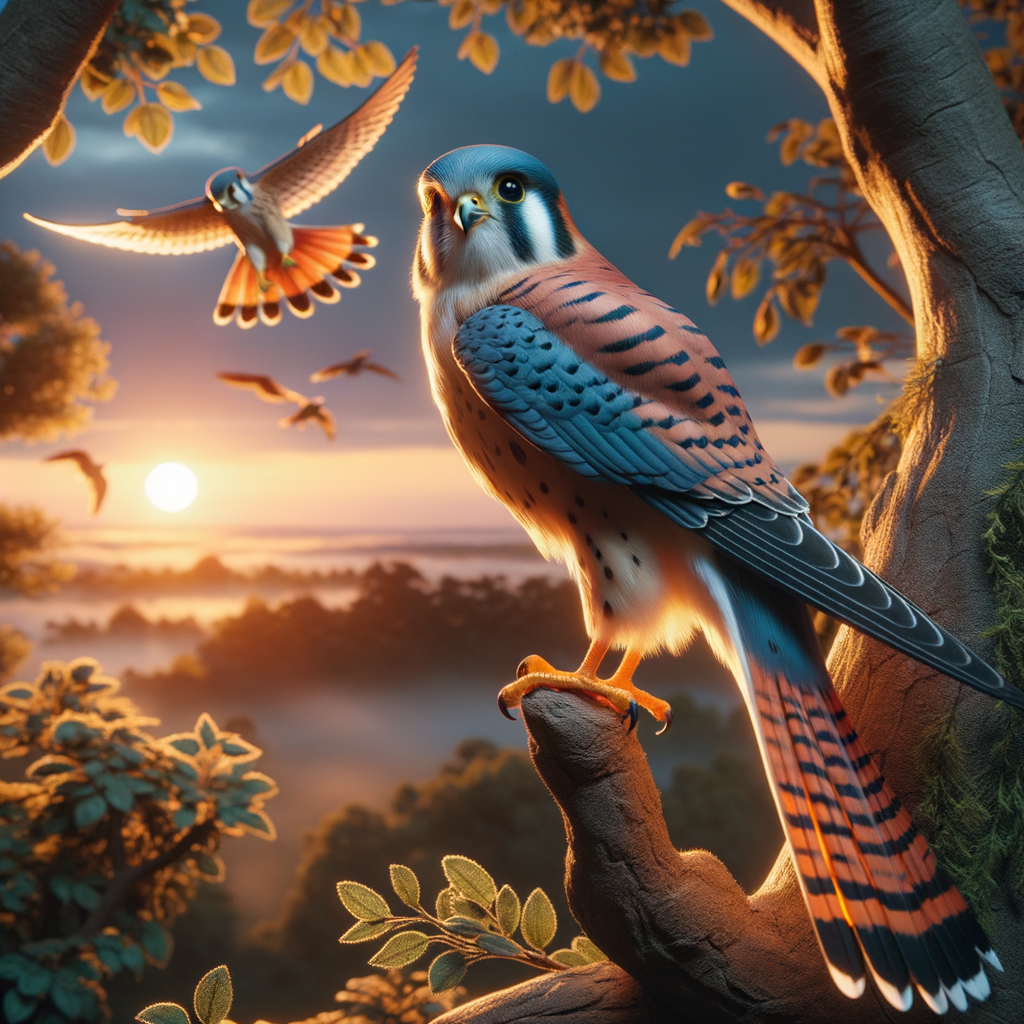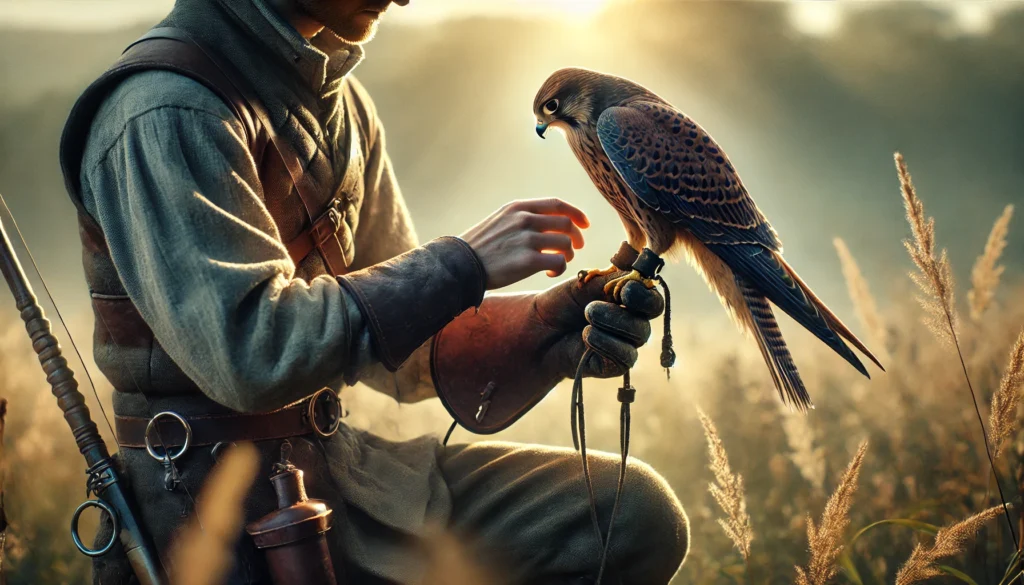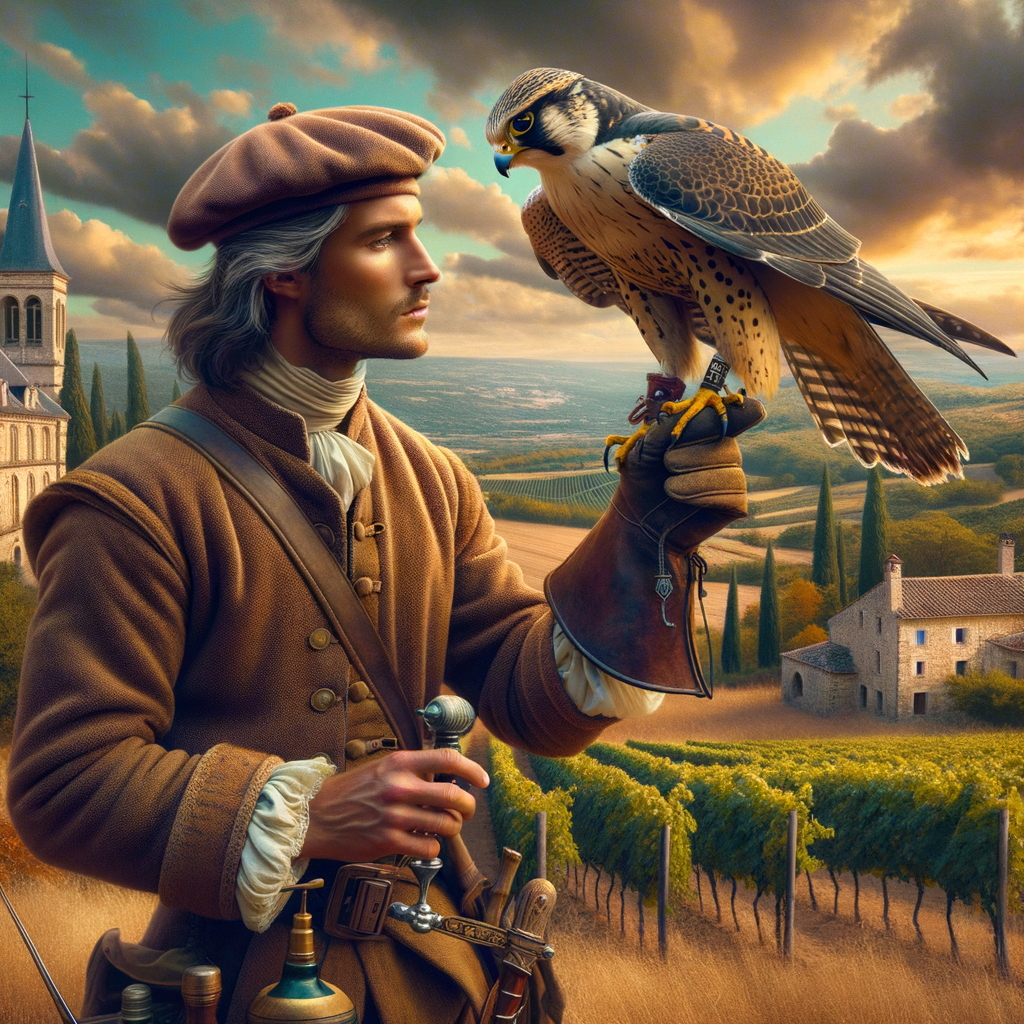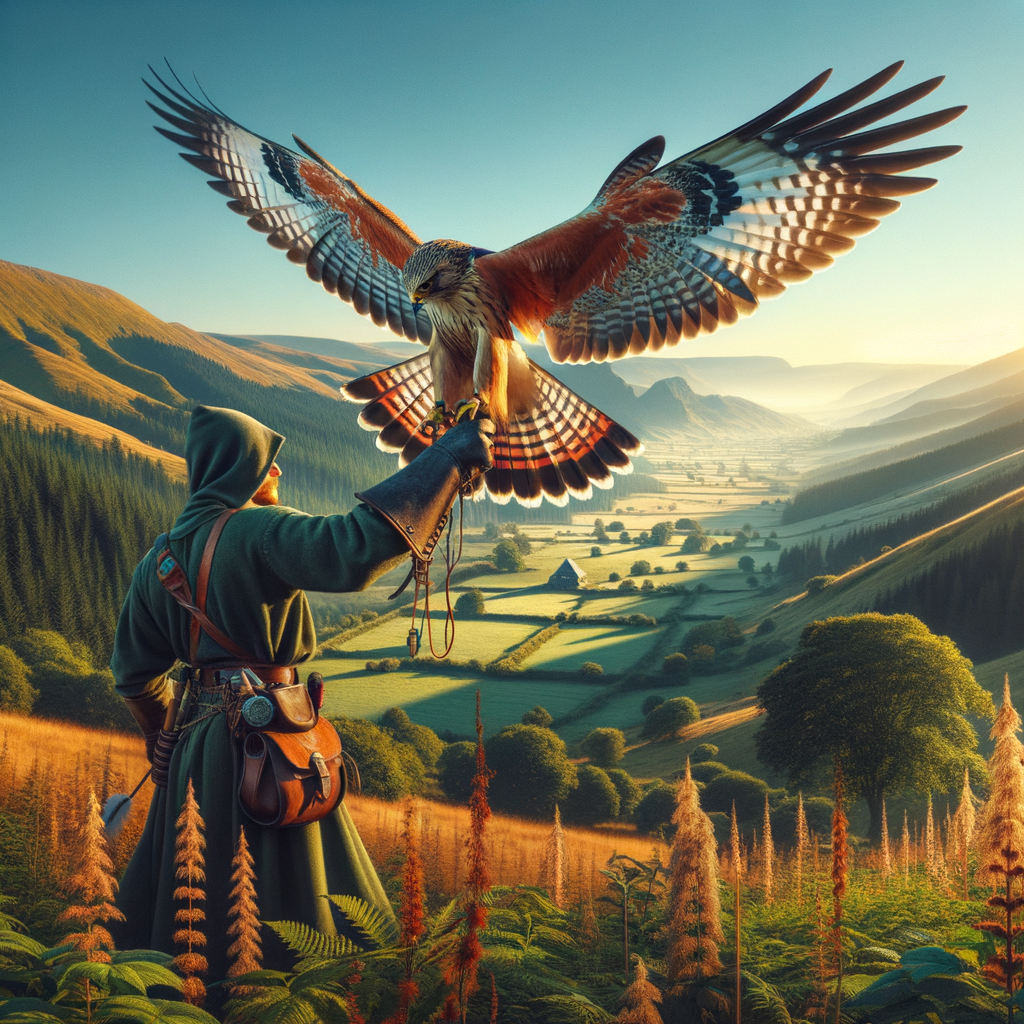Fascinating Facts About American Kestrels
- Small Yet Mighty: Despite being the smallest falcon in America, American Kestrels are fierce hunters.
- Vibrant Colors: Males are known for their striking blue-gray wings and rusty-red backs, while females have beautiful reddish-brown plumage.
- Diet Variety: They feed on insects, small mammals, and birds, showing their diversity in diet.
- Widespread Habitat: Found all over the Americas, from Canada to Argentina.
- Excellent Vision: Equipped with incredible eyesight, American Kestrels can spot prey from afar.
- Nesting Habits: They prefer nesting in tree cavities, buildings, and even nesting boxes provided by humans.
- Speed and Agility: Known for their quick and agile flight, making them effective hunters.
- Threat Displays: When threatened, they may bob their heads and tails to appear more intimidating.
- Endangered in Some Areas: Although widespread, their numbers are declining in certain regions due to habitat loss.
- Conservation Efforts: Support from humans through building nesting boxes has helped their populations in some areas.
Come explore the world of American Kestrels with Learn Falconry and uncover more about these incredible birds!
Discovering the Marvels of American Kestrels: Nature’s Tiny Warriors
Have you ever marveled at the delicate beauty of a rainbow during an Irish shower? Just like those radiant colors that suddenly brighten our skies, American Kestrels add a burst of wonder to the world of falconry and our natural landscapes. At Learn Falconry, we know that these little warriors are more than just a pretty sight’they’re a key part of our ecosystems and a joy to observe. So, grab a cozy spot and prepare to be captivated by the fascinating life of the American Kestrel!
Known for their petite size, colorful plumage, and fierce hunting skills, American Kestrels hold a special place in the heart of falconry enthusiasts. But their significance doesn’t stop at their looks or agility. These birds play a critical role as both predators and prey, helping to keep nature’s balance in check. Think of them as the vigilant shepherds managing a flock, always ensuring harmony in their domain. As you dive deeper into our article, you’ll uncover intriguing facts about their behavior, habitats, and the vital contributions they make.
Imagine the swift breeze on your face as you watch a kestrel hover in mid-air, scanning the fields below for a tasty snack. This experience is not just a thrilling spectacle; it’s a glimpse into the incredible adaptability and prowess of one of nature’s most impressive aerial hunters. Whether you’re a seasoned falconer or just curious about these splendid birds, understanding the American Kestrel can deepen your appreciation for the natural world and the beauty it holds.
So why keep reading? Because, much like a finely crafted Irish tale that draws you in with every sentence, the story of the American Kestrel is filled with wonder, excitement, and lessons about life’s delicate balance. By the end, you’ll not only have a newfound respect for these magnificent birds but also a richer connection to the environment they thrive in. Let’s embark on this journey together to explore the magic and majesty of American Kestrels.
Discovering the American Kestrel: A Guide for Passionate Falconers
The American kestrel is one of the smallest and most colorful falcons in North America. This delightful bird of prey is not only visually stunning but also remarkable in its abilities. The fascinating world of kestrel falconry opens doors to understanding these incredible flyers, their habits, and their unique role in the ecosystem.
Meet the American Kestrel
The American kestrel, often referred to as the “sparrow hawk,” is a member of the kestrel species. These birds are characterized by their small size, vibrant plumage, and remarkable hunting skills. Male American kestrels are easily identified by their blue-grey wings and rusty-red back, while females are adorned with reddish-brown streaks.
Kestrel Falconry: A Unique Experience
Kestrel falconry offers a distinctive experience compared to working with larger birds of prey. Since American kestrels are small and agile, they can be easier to handle and train, especially for beginners. Practicing kestrel falconry requires understanding specific training techniques and utilizing appropriate falconry equipment.
Training American kestrels involves teaching them to hunt small prey, such as insects and small rodents. Essential tools for this training include falconry gloves, hoods, and lures. Clicker training and positive reinforcement techniques are often used to establish a strong bond with the bird.
The Diverse Kestrel Species
The American kestrel is just one of many species in the kestrel family. Each species has unique traits and adaptations that make them special. For those interested in learning about different types of kestrels and other falcon species, our comprehensive species of falcons section offers a wealth of information.
Kestrel species’ diversity contributes to their worldwide presence, making them a fascinating subject for falconers and bird enthusiasts alike.
Training and Care
Mastering falconry with kestrels involves understanding their behavior, diet, and health needs. Ensuring your kestrel is in peak condition requires regular health check-ups and adhering to a balanced diet. This may include feeding wild-caught prey and providing nutritional supplements as needed.
The training process is rewarding but can come with challenges. Overcoming these requires patience and the use of advanced training techniques.
The Legal Aspects of Kestrel Falconry
Embarking on a journey into the world of kestrel falconry also involves understanding the legal requirements. Different regions have specific falconry licensing requirements and regulations to ensure ethical and responsible practices.
Joining a falconry club can provide valuable support and resources for navigating these requirements. These organizations often offer mentorship programs, which are particularly beneficial for beginners.
The Role of Kestrels in Conservation
The role of kestrels extends beyond falconry to important conservation efforts. These small raptors help control pest populations and maintain ecological balance. Their involvement in conservation programs contributes significantly to preserving biodiversity and promoting environmental health.
Exploring the connection between kestrels and conservation reveals how falconry can support broader environmental efforts. Educating the public and engaging in sustainable practices are crucial for making a positive impact.
Embark on this amazing journey with the American kestrel, and discover the magic of kestrel falconry. Dive into the world of these captivating birds as you learn and grow with our extensive resources at Learn Falconry!
Exploring the World of American Kestrels
The American Kestrel is one of the most fascinating birds in North America, known for its agility and striking appearance. Let’s take a closer look into the life and habitat of these stunning falcons.
Habitat and Distribution
American Kestrels are a common sight across a vast range, from North America down to South America. They are frequently seen perched on power lines, poles, or effortlessly hovering over open fields in search of prey.
Table: American Kestrel Distribution
| Region | Common Sightings |
|---|---|
| North America | Power lines, open fields |
| Central America | Forest edges, grasslands |
| South America | Agricultural lands, deserts |
During the winter months, American Kestrels migrate to warmer climates as their prey, such as insects and small mammals, either hibernate or move away from the colder regions.
Physical Characteristics
The American Kestrel is the smallest falcon in North America. Weighing in at just 3-6 ounces, about the same as 34 pennies, they may be small but they are mighty.
Table: American Kestrel Physical Traits
| Measurement | Description |
|---|---|
| Weight | 3 – 6 ounces |
| Feather Colors | Blues, Reds, Grays, Browns, Blacks |
Their vibrant feather patterns make them easy to identify and a joy to observe. These falcons are truly a sight to behold.
Behavioral Traits
What makes American Kestrels so remarkable is their behavior. They are known for their swift flight and exceptional aerobatic skills, including the ability to hover in mid-air. This hovering ability is particularly useful when they are hunting for food.
Table: American Kestrel Behavior
| Behavior Type | Characteristics |
|---|---|
| Hunting | Hovering in mid-air, diving stoops |
| Prey | Insects, small rodents |
Kestrels are expert hunters. They catch a variety of prey including insects and small rodents and can dive sharply to catch their meals mid-flight.
Conservation Efforts
Efforts to conserve American Kestrels are ongoing and include various research and community involvement programs. One of the notable programs is the American Kestrel Partnership (AKP), which has merged with the Cornell Lab of Ornithology’s NestWatch. This partnership allows easier access to data for researchers and supports conservation and awareness efforts.
Table: American Kestrel Conservation Efforts
| Program | Key Contribution |
|---|---|
| American Kestrel Partnership | 60,000+ observations of breeding activity |
| NestWatch | Centralized data management and accessibility for research |
| Harris Center | Installation of nest boxes, population monitoring |
These programs focus on breeding activity, habitat conservation, and long-term monitoring to better understand and support American Kestrel populations.
Breeding and Nesting
American Kestrels typically breed in cavities, either in trees along forest edges or in nest boxes provided by conservation programs. They lay between four and five eggs per clutch.
Key Breeding Stats for 2024:
- Breeding season: Starts in April
- Typical clutch size: 4-5 eggs
- Egg laying interval: One egg every other day
These efforts are crucial as suitable nesting cavities are becoming less available due to changes in agriculture and forest health.
Monitoring and Research Contributions
Monitoring efforts continue to play a vital role in understanding and protecting American Kestrels. With over 60,000 observations from more than 5,200 nest boxes across a wide range, researchers can better understand factors impacting kestrel reproduction.
Table: Monitoring and Research Data
| Program | Contribution |
|---|---|
| American Kestrel Partnership | Centralized observations |
| NestWatch | Data management system |
| Harris Center | Long-term monitoring |
Through these collaborative efforts, kestrel conservation gains valuable insights, which help inform both current and future protection strategies.
By understanding these key aspects of American Kestrels’habitat, characteristics, behavior, conservation, breeding, and research’ we can appreciate the significant steps being taken to ensure their survival and well-being.
Final Thoughts on the American Kestrel
The American Kestrel is a fascinating and agile bird that continues to capture our imagination. From their distinctive feather patterns to their skilled hunting prowess, these small falcons play an essential role in our ecosystems. Found across North and South America, they’ve adapted to various habitats, often perched on power lines or hovering over fields in search of prey.
However, the American Kestrel faces challenges due to habitat loss and declining populations, especially in regions like the Northeast United States. Conservation efforts, such as the work by the Peregrine Fund’s American Kestrel Partnership (AKP) and the Harris Center, are crucial. By installing nest boxes and monitoring their populations, these organizations aim to support and stabilize kestrel breeding grounds.
With increased community involvement and scientific research, there’s hope that the American Kestrel will continue to thrive. The partnership with Cornell Lab of Ornithology’s NestWatch is a significant step in making vital data accessible and fostering more concentrated conservation efforts.
Let’s appreciate and support the efforts to conserve these remarkable birds for future generations to admire and enjoy. By doing so, we contribute to maintaining the balance within our ecosystems and ensuring a vibrant future for the American Kestrel.



